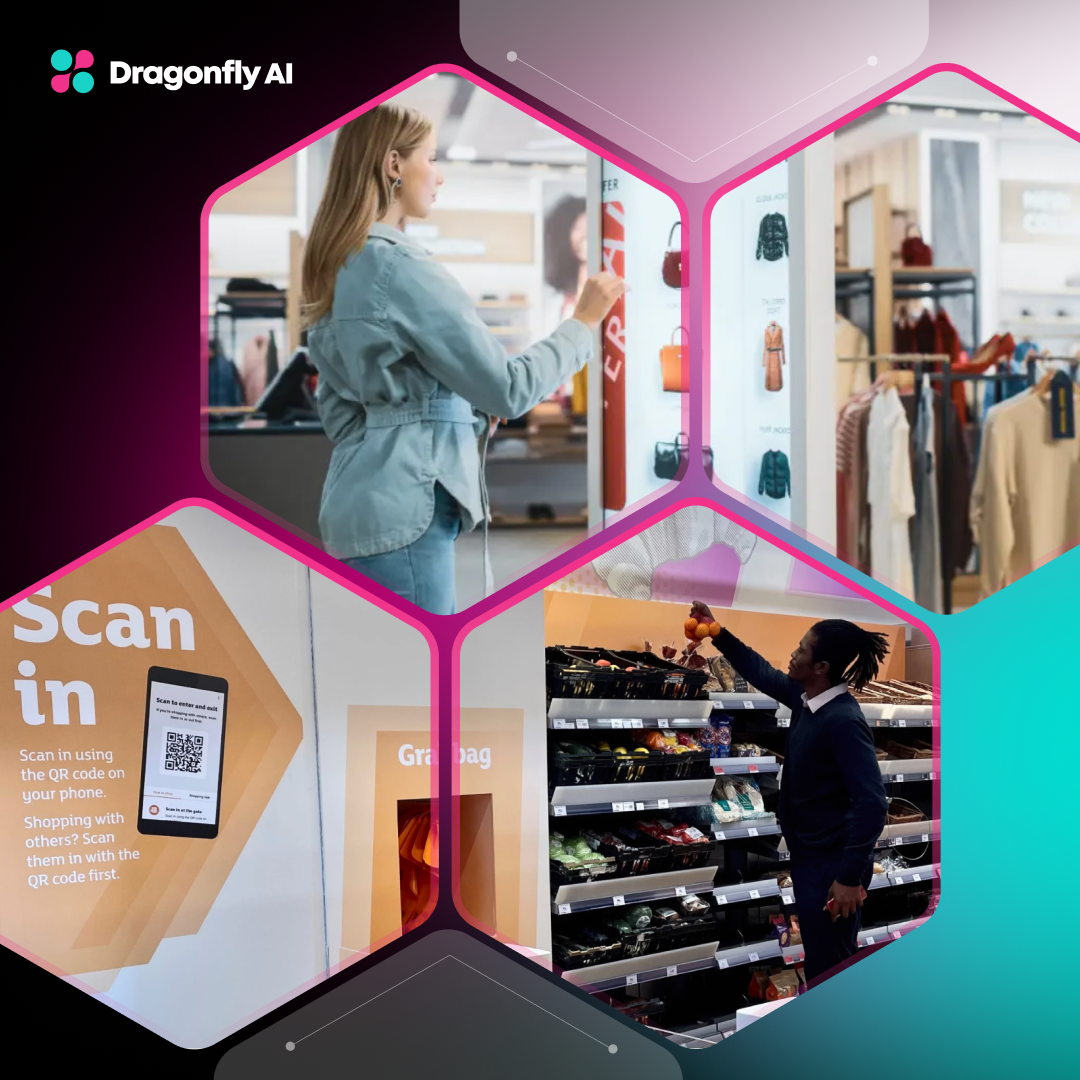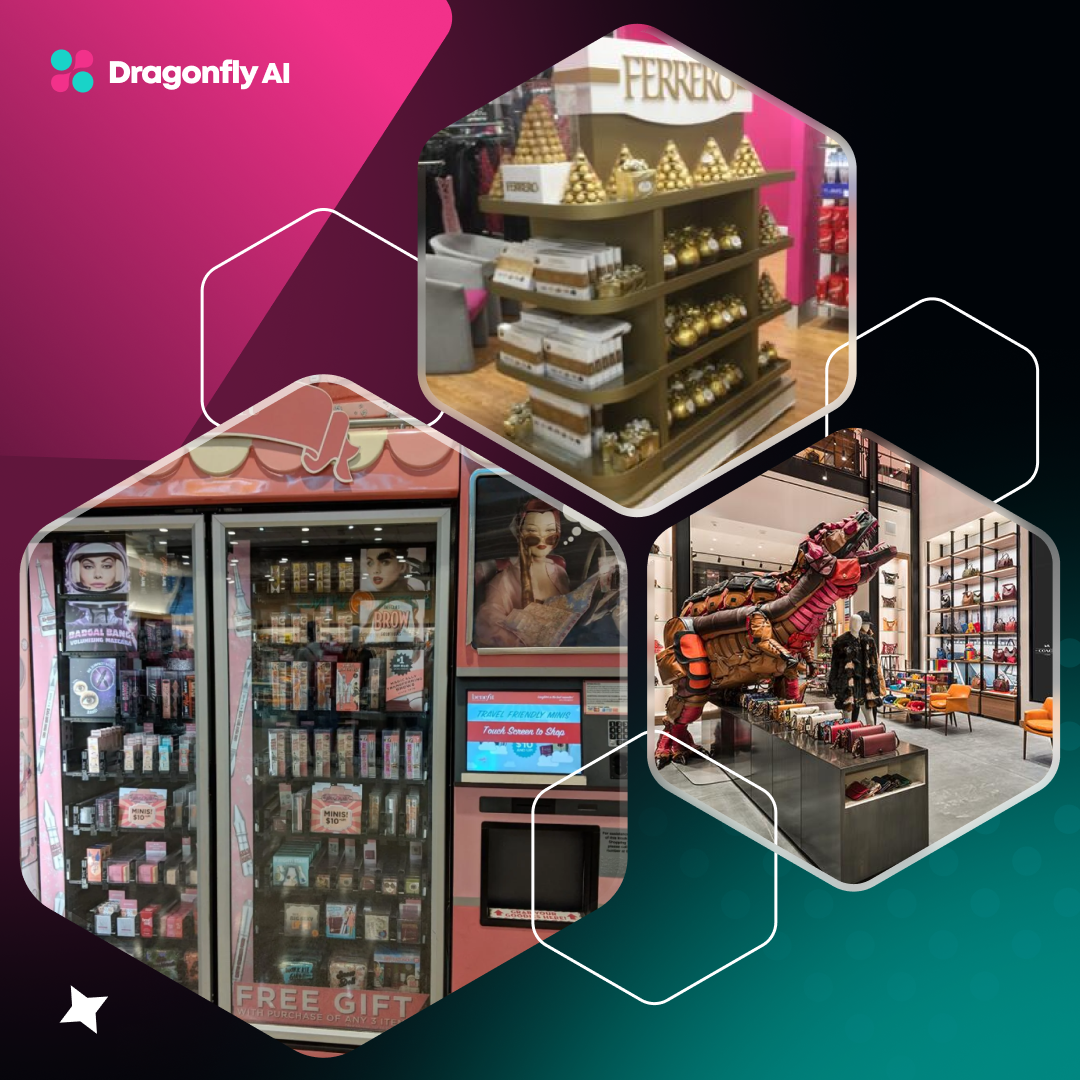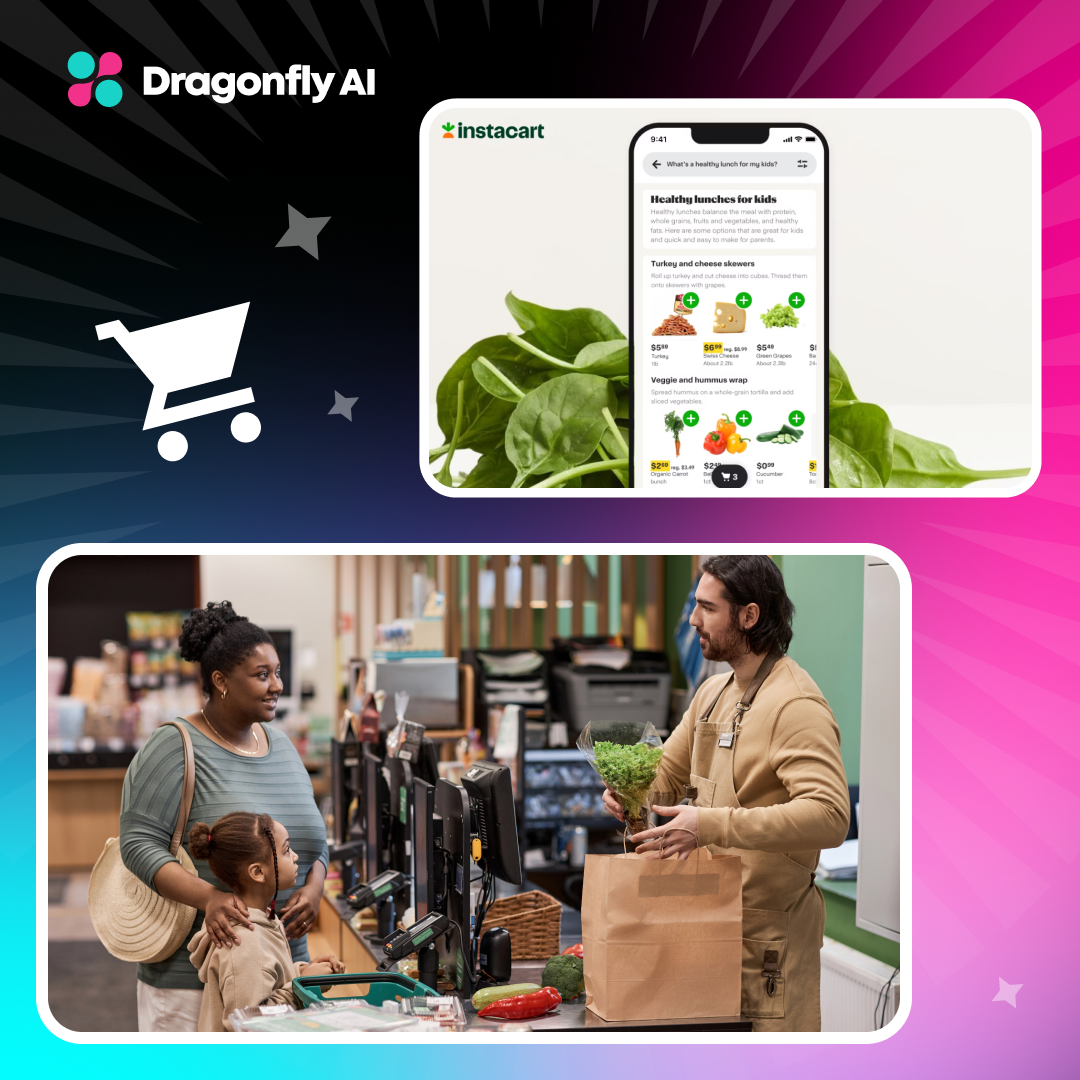Despite the rise of e-commerce, physical stores are far from extinct. Statistics show that 94% of customers still shop in brick-and-mortar stores, and these stores generated around $6.22 trillion in the U.S. alone in 2023. But with competition fierce, how can traditional stores stay relevant and capture customer attention in a crowded marketplace?
The answer lies in leveraging the power of predictive insights. Predictive insights use advanced analytics and machine learning to forecast future trends and behaviors. Brands can ensure proactive decision-making by using predictive insights into in-store promotion and advertising strategies.
Understanding Predictive Insights
Predictive insights are actionable forecasts derived from historical data, current trends, and external factors. They use sophisticated algorithms and ML models to analyze vast amounts of information and identify patterns that can predict future behavior.
These insights rely on a variety of data sources, including:
- Customer Transaction Data: Past purchases, loyalty program information, and demographics paint a picture of shopper behavior and preferences.
- In-Store Sensor Data: Data from foot traffic sensors, heat maps, and facial recognition technology can reveal how shoppers navigate stores and interact with displays.
- Customer Demographics: Information about age, gender, income, and other demographic factors helps customize promotional marketing efforts to specific audience segments.
- External Data: Market trends, weather patterns, and social media sentiment analysis can offer valuable context for predicting shopper behavior.
Benefits for Shopper Marketing Professionals
Predictive insights offer a multitude of advantages for shopper marketing professionals in the CPG sector.
- Improved Targeting: Predictive insights can identify specific customer segments with high purchase propensity for particular CPG products. The insights allow brands to customize their messaging and product placement for maximum impact.
- Personalized Customer Experience: Insights can predict individual shopper needs in real-time. For instance, in-store displays can adjust content based on a customer's past purchases or loyalty program data. This strategy creates a more personal and engaging shopping experience.
- Dynamic Promotions and Offers: Predictive insights can help you understand what products will be in high demand and customize promotions accordingly. This way, brands can attract more customers and increase sales.
- Improved Inventory Management: Predict what products will fly off the shelves and which might linger. This allows for optimized inventory levels, reducing stockouts and preventing overstocking, both of which negatively impact sales.
Predictive insights pave the way for a more targeted, data-driven strategy that resonates with individual shoppers—ultimately leading to increased brand loyalty and sales growth.
Application of Predictive Insights in In-Store Advertising
Predictive insights aren't just theoretical. They translate into real-world applications that can notably improve your in-store advertising strategy. Here's how:
Identifying Customer Preferences
Predictive insights offer a deeper understanding of your customers. By analyzing data on past purchases, demographics, and loyalty program information, you can:
- Highlight relevant products: Knowing which products are frequently bought together allows you to create targeted displays that promote complementary items. For example, if someone picks up a bag of pasta, you might advertise a jar of your best-selling pasta sauce.
-1.png?width=1280&height=700&name=Blog%20image%203%20(18)-1.png)
Identify purchase triggers: Understanding factors influencing a customer's buying decision can be invaluable. Predictive models can identify external triggers like weather patterns or holidays, allowing you to tailor promotions accordingly. For instance, you can highlight refreshing beverages near the entrance during a heatwave.
Optimizing Product Placement
Gone are the days of static shelf displays. Predictive insights can revolutionize product placement strategies:
- Leveraging impulse purchases: Position high-margin, impulse-buy items near checkout counters or high-traffic areas to capitalize on last-minute decisions.
- Heat Mapping Customer Flow: By analyzing foot traffic patterns, you can identify areas where customers spend the most time. This lets you strategically place high-margin products or promotional displays in these highly visible locations.
Tailoring Promotions and Advertisements
Predictive insights elevate in-store advertising from one-size-fits-all to a personalized experience:
- Dynamic digital signage: Use digital displays to showcase targeted promotions based on a customer's demographics or past purchases. For example, offer discounts on baby formula to new parents or highlight healthy snacks to fitness enthusiasts.
- Localized in-store marketing: Tailor promotions and advertising to the specific needs of your local customer base. For example, promote grilling essentials in areas with a high concentration of homeowners or advertise cultural food items in diverse neighborhoods.
Case Studies and Examples
Several CPG brands have successfully used predictive insights to enhance their in-store advertising campaigns. Examples include:
Case Study – Procter & Gamble
P&G used predictive analytics to optimize product promotion and placement for their Tide laundry detergent brand. By analyzing customer data and purchase patterns, they identified the most effective locations for in-store displays and created targeted promotions that drove sales and increased customer loyalty.
.png?width=1280&height=700&name=Blog%20image%204%20(4).png)
Case Study – Kraft Heinz
Kraft Heinz used predictive insights to personalize its in-store advertising for its Kraft and Heinz brands. By analyzing customer data and preferences, they created targeted promotions and offers resonating with specific customer segments, increasing sales and customer engagement.
Tools and Technologies
Equipping yourself with the right tools is important to harness the power of predictive insights in in-store advertising. Enters Dragonfly AI, a predictive analytics platform that uses smart data analysis to predict the performance of your creative content across various channels, formats, and markets.
Dragonfly AI offers a suite of tools designed to empower retailers with actionable insights:
- Creative Intelligence Platform: Advanced AI algorithms help analyze visual content, such as product packaging and in-store displays. They predict how well these visuals will resonate with target audiences, allowing you to optimize your creative assets for maximum impact.
- Shelf Optimization Tool: Shelf optimization tools analyze factors like product visibility, customer gaze patterns, and past sales data to recommend optimal product placement strategies. This ensures your high-margin items and targeted promotions are strategically positioned to grab customer attention and drive sales.
Integration with Existing Systems
The beauty of Dragonfly AI's solutions lies in their smooth integration with your existing retail marketing strategies:
- Seamless API integration: Dragonfly AI offers an Application Programming Interface (API) to smoothly integrate your existing systems. This API enables a two-way flow of data, ensuring Dragonfly AI analyzes your creative assets and feeds the resulting insights back into your promotional marketing workflows.
- Studio for pre-launch testing: Dragonfly AI offers Studio, a desktop solution specifically designed for the pre-launch phase of product campaigns. Studio incorporates A/B testing capabilities alongside real-time analysis. This allows you to efficiently test different creative elements, such as packaging designs and in-store display mockups, before they go live.
- Mobile app for on-the-go analysis: Dragonfly AI's mobile app provides a valuable tool for field marketing teams. The app allows you to gather immediate feedback on in-store displays and out-of-home advertisements directly at the point of sale. This real-time data can be used to make adjustments to your campaigns and optimize their effectiveness on the fly.
Best Practices for Shopper Marketing Professionals
Optimizing in-store advertising with predictive insights requires a data-driven approach. Here are some best practices for shopper marketing professionals to succeed in this new era of data-driven advertising:
Data Collection and Analysis
Building a foundation of rich customer data is crucial. Here's how to gather and analyze it effectively:
- Identify key data sources: Go beyond traditional sales data and explore customer demographics, loyalty program information, sensor data, and external factors like weather patterns.
- Invest in data management tools: A robust Customer Data Platform (CDP) can centralize your data sources, ensuring consistency and accessibility for analysis.
- Embrace data visualization: Consider using business intelligence (BI) platforms or data visualization tools to uncover hidden trends and patterns within your data sets.
Implementing Insights
Once you have valuable insights, it's time to put them into action:
- Personalize your messaging: Customize in-store advertising campaigns to resonate with each shopper segment. This could involve targeted digital signage, product recommendations, and promotional offers.
.png?width=1280&height=700&name=Blog%20image%207%20(4).png)
- Craft dynamic pricing strategies: Use insights to understand customer price sensitivity and willingness to pay for specific products. This allows you to develop pricing strategies that maximize profitability while remaining competitive.
- A/B testing: Test variations of your in-store advertising campaigns, such as digital signage content or shelf layouts, to identify the most effective elements.
Continuous Improvement
The best marketing strategies are constantly evolving. Here's how to stay ahead of the curve:
- Monitor campaign performance: Track key metrics like sales lift, customer engagement, campaign ROI, and conversion rates.
- Refine your approach: Based on your performance data, iterate and refine your in-store advertising campaigns to maximize their effectiveness.
- Embrace a culture of experimentation: Don't be afraid to experiment with new technologies and approaches to optimize your shopper marketing efforts.
This approach will drive sales and brand loyalty for CPG brands and create a more engaging and personalized shopping experience for customers.
Analyzing Insights for Competitive Advantage
In CPG marketing, reacting quickly to trends is no longer enough to stay competitive. Here, predictive insights empower you to become a trendsetter. This proactive approach allows you to:
Staying Ahead of the Curve
Predictive insights can provide a significant competitive edge in the retail industry. Here’s how:
- Identify customer trends: Predictive insights can reveal emerging customer preferences and buying habits before competitors catch on. Use this knowledge to adapt your product offerings, connective in-store promotions, and overall marketing strategy to stay ahead of the curve.
- Predict competitor moves: Analyze data on competitor marketing campaigns and product launches. This can help you anticipate their strategies and develop counter-measures to maintain your market share.
- Optimize pricing strategies: Use insights to understand customer price sensitivity and willingness to pay for specific products. This allows you to develop dynamic pricing strategies that maximize profitability while remaining competitive.
Adapting to Market Changes
The ability to adapt to changing market conditions is crucial for success. Predictive insights can empower you to be more responsive:
- Respond to seasonal shifts: Anticipate fluctuations in demand based on weather patterns, holidays, and other seasonal factors. Adjust your in-store promotions and product placement accordingly to capitalize on seasonal trends.
- Manage supply chain disruptions: Use insights to predict potential supply chain disruptions and proactively adjust your inventory management strategies to minimize impact on customer experience.
- Embrace new technologies: New technologies like Augmented Reality and Virtual Reality present exciting opportunities for in-store advertising. Stay informed about new technologies and tools that can provide even deeper and more comprehensive predictive insights.
Conclusion
Capturing customer attention at the point of purchase is important in the current CPG space. With predictive insights, shopper marketing professionals can:
- Target with laser precision to reach high-value customers with personalized messaging.
- Optimize product placement to maximize impact and sales opportunities.
- Craft targeted promotions and advertisements that resonate with individual shoppers.
Take your in-store advertising to the next level. Explore how Dragonfly AI can empower you to leverage the power of predictive insights and create a more personalized and effective shopping experience for your customers.
Book a demo today to learn more!


-1.png?width=1280&height=700&name=Blog%20image%203%20(18)-1.png)
.png?width=1280&height=700&name=Blog%20image%204%20(4).png)
.png?width=1280&height=700&name=Blog%20image%207%20(4).png)
